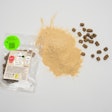
The pet food industry has often struggled with the US Food and Drug Administration's (FDA) Center for Veterinary Medicine over the recognition and acceptance of ingredients. Examples abound, and each petfood company can likely recall an ingredient that has presented a challenge.
With FDA's announcement of the "generally recognized as safe" (GRAS) notification procedure as an option for pet food ingredient recognition, some positive changes are coming for the industry.
Two mainstay methods
Traditionally, there have been two major processes for ingredient acceptance:
- The food additive petition approval process through FDA; or
- The feed ingredients definition process through the Association of American Feed Control Officials' (AAFCO) Ingredient Definitions Committee (IDC).
The food additive petition process is slow, cumbersome and expensive for FDA recognition of a new ingredient. On the other hand, the AAFCO ingredient definition process can be a quicker process, but the required data are substantial and the process often still does not meet the timeline most companies are seeking.
In both of these scenarios, it is FDA making the final determination of the safety of these ingredients, not the firm. This is the key difference between these two current ingredient recognition processes and the new GRAS procedure.
Safety sums it up
The main distinction between the food additive petition and AAFCO processes can be best summed up by safety concerns and, thus, safety data. Typically, depending on the ingredient, FDA will determine which of these two processes should be utilized based on the potential safety concerns of a particular ingredient.
That is, an ingredient FDA deems having significant safety concerns will typically be routed through the food additive petition process, while ingredients with fewer safety concerns may be directed down the IDC path (granted the intended use is not deemed a drug). While there are other distinctions, the criteria for safety play an important role in determining which way an ingredient might be recognized by the agency.
In the case of GRAS, the burden of determining safety is placed on the firm, based on general recognition. This task can be very difficult, particularly for a novel ingredient. It places a heavy burden on the notifying company to convince FDA an ingredient is a food generally recognized as safe for a specified intended use.
Key considerations
While FDA's plan for GRAS is a huge step forward for the industry in terms of accepting ingredients, there are some things you should think about before starting the GRAS process.
First, general recognition is a requirement, just as the GRAS name suggests. That means the bulk of the information used to establish safety must be widely known by or available to the public. Leaves found on a rare tree in the African rain forest and ground into a pulp to promote immune health are likely not a good candidate for GRAS.
Instead, you should think carefully about the historical identification and use of an isolated nutrient or compound that is a component of your ingredient. It is safe to say FDA is likely to take a narrow view of "general recognition"; therefore, pet food companies must think creatively prior to submitting a GRAS notification.
Second, you must make an adequate case the product is indeed a food (providing nutrition, taste or aroma). This is the single most common mistake made by firms when submitting a request to FDA for ingredient recognition. All too often, a company asks the agency to approve something that does not meet the criteria for a food.
Finally, you should understand intended use is a key component FDA will use to determine the applicability of GRAS for an ingredient. Therefore, the intended use must be to provide taste, aroma or nutritive value (or any combination of these properties). If an intended use is something that suggests something other than food (i.e., a drug), the agency will notify the firm the GRAS process is not applicable to drugs.
Ripe opportunities
There are some great opportunities for GRAS, if done appropriately. In most cases, your company should understand not just the GRAS process but also the processes for a food additive petition and AAFCO IDC.
It is likely FDA will take a conservative approach for ingredients in which they issue a "no questions asked" letter. However, there are a number of ingredients that may benefit from this approach. Examples include:
- Normal constituents (nutrients) found in feed that, when isolated, are not recognized as an ingredient by FDA;
- Ingredients that have evolved as a result of technology and no longer meet an existing AAFCO definition;
- Ingredients with alternative intended uses.
While there are likely to be many potential ingredients that may benefit from GRAS, there are far more that probably will not be eligible for this process.
The GRAS notification procedure offers an entirely new option for ingredient acceptance. However, the burden is on the firm to illustrate safety, and gaining FDA acceptance is still a formidable task.

















